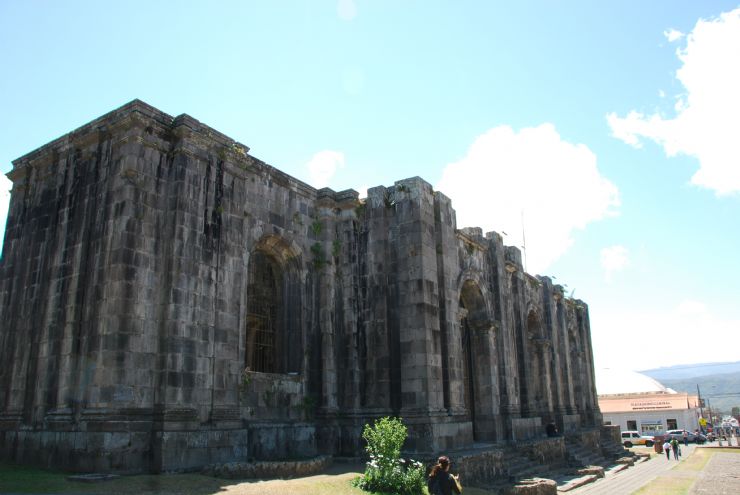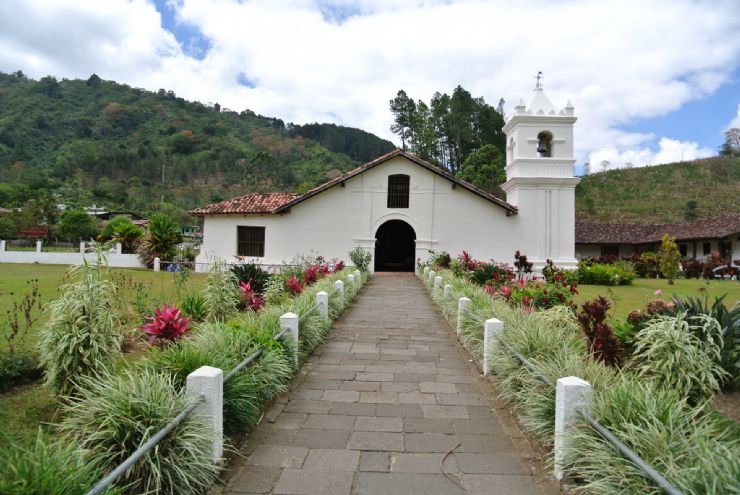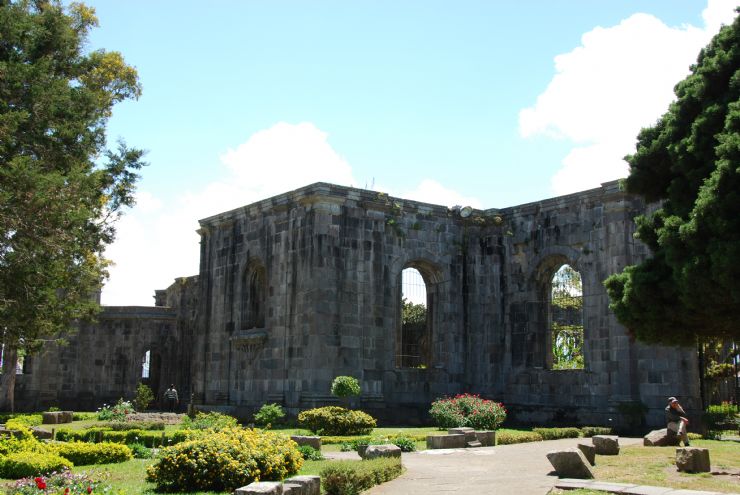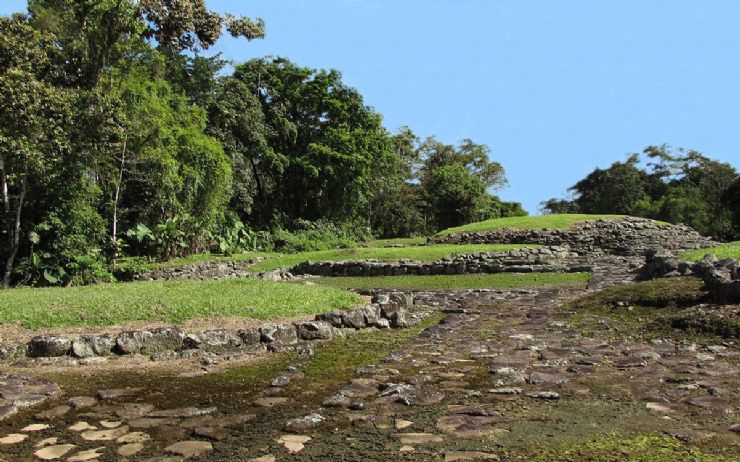
Full front of Cartago's ruins
When you're planning what to do in Costa Rica, Cartago should be on your list! As the first capital of Costa Rica, Cartago is one of the oldest communities in the country, and as you can imagine, there are some great sites to see. You may not realize it, but I am actually a huge history buff. It may be from my travels throughout Costa Rica, or all the stories that I've heard in the rainforest, but I love visiting historic areas. The ruins in Cartago, which date back to the 16th century, give you a glimpse into the rich history of Costa Rica. In 1723, an eruption of the Irazu Volcano nearly destroyed the entire town, but luckily there are still some ruins that stand today. Since the volcano sits a mere 24 miles away, there have been several eruptions that have damaged some of the ruins.

In front of Orosi Church, Cartago
Santiago Apostol Parish Ruins
The Santiago Apostol Parish Ruins is a cultural heritage site in Costa Rica that houses multiple churches that have existed since 1575. The first building here was damaged by an earthquake in 1630, and the remains were demolished in 1656. The new church had two chapels that were used by the people of the town before an earthquake in 1718 destroyed it. You really have to catch things while they last in this part of the country!
7 Days / 6 Nights
Starting at $779 per person
With all of this damage, it seems like this place could be cursed, right? Well, legend has it that two brothers were some of the earliest settlers of Cartago. One brother was a priest, the other a well-liked single man. Both of them ended up falling in love with the same woman, who chose the well-liked brother, but the priest was not pleased with the situation, and ended up killing his brother. Afterwards, he felt awful about what he had done and built a church. A year later, however, it was destroyed in an earthquake, and people believe that the the number of earthquakes Cartago has suffered is due to a curse! Construction was completely stopped in 1910, and the remains are now a major Costa Rica tourism destination.
In the 1800s, people discovered this Guayabo monument when locals were clearing the land to plant crops. Since the discovery, experts and locals have been researching the monument's origins. It was interesting researchers and native Costa Ricans because the people who lived here were obviously highly skilled. They were able to transport rocks, construct roads and use technologically advanced water systems that still work today! The people that lived here were also skilled in urban planning, architecture and civil engineering. Scholars have linked the monument to pre-Columbian America, which only makes the mysterious attraction all the more ... well, attractive!

Beautiful Cartago Ruins with gardens
This archeological site is about 85 miles away from San Jose and was declared a national monument in 1973. Although this monument is protected, no one actually knows for sure who inhabited the region. I've heard a lot of different stories during my travels and most animals that I've talked to believe that around 1,500 to 2,000 people lived here between 400 and 1,400 AD. There are actually some rocks here with petroglyphs or pictograms carved into them. Visitors can still see these etchings today. Some of them have drawings of birds, cats and other animals. There are nine sculptures carved in stone on this site. I've heard stories that people lived here were led by a chief, but no one knows why the area was eventually abandoned.
This ancient indigenous village sits on about 49 acres, and scientists believe that some of the items found here date back 1,200 years before Christ. Most of the buildings were made out of wood and they sat on stone foundations, but one of the most impressive things is the drainage system. Between the houses here, there were areas paved in stone that were both streets and drainage systems! And the people that lived here had aqueducts, some of which were open and others closed, that carried water from streams to rectangular storage tanks that would be moved where water was needed.
One of the most wonderful parts about this area is that you can actually camp here! The area is surrounded by an evergreen rain forest with eighty different species of orchids and towering elm trees. Since the area is fairly small, there aren't a lot of animals that live here. You may catch a peak at a toucan or squirrel, but the flora scenery is what you should really keep your eye on.

Guayabo National Monument

